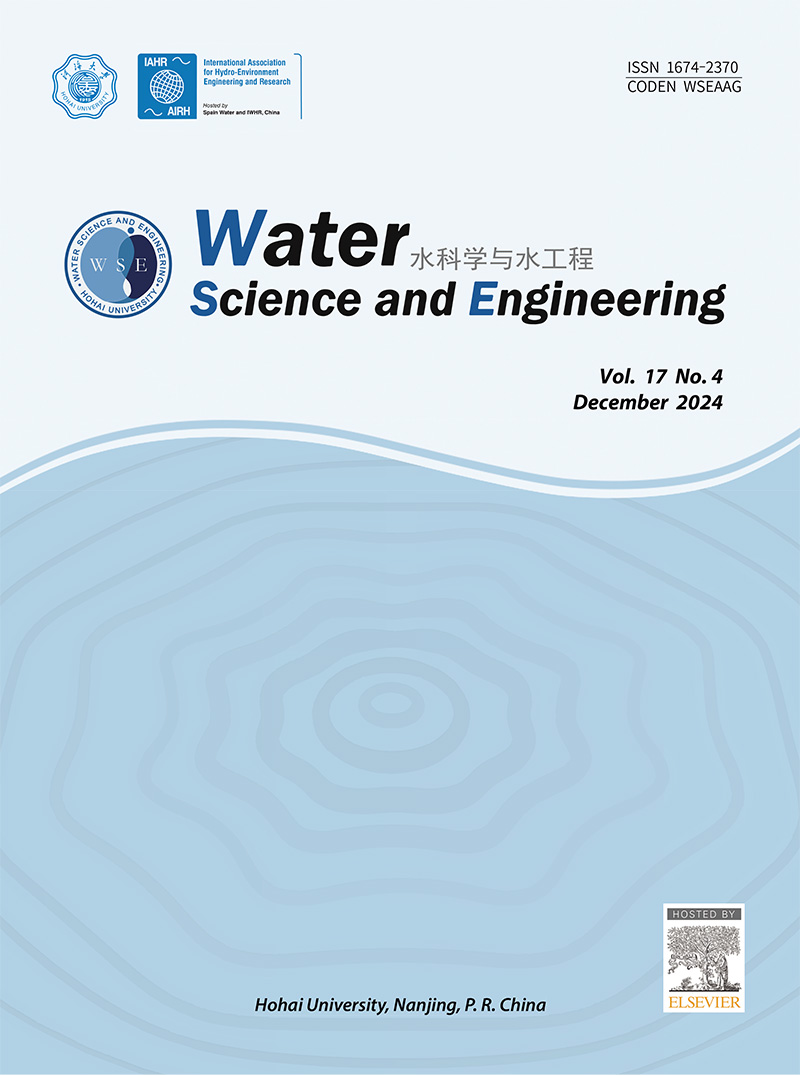Effect of membrane material and pore size on membrane fouling during filtration of algae-laden water
IF 4.3
Q1 WATER RESOURCES
引用次数: 0
Abstract
Membrane filtration technology has been widely utilized for microalgae harvesting due to its stability and high efficiency. However, this technology faces challenges posed by membrane fouling caused by algal cells and extracellular organic matter (EOM), which are significantly influenced by membrane material and pore size. This study compared the fouling behavior of polyvinylidene fluoride (PVDF) membranes and ceramic membranes with similar pore sizes (0.20 μm and 0.16 μm, respectively) during the filtration of Microcystis aeruginosa. The ceramic membrane exhibited a lower transmembrane pressure (TMP) growth rate and reduced accumulation of surface foulants compared to the PVDF membrane, indicating its greater suitability for filtering algae-laden water. Further investigations employed membranes fabricated from aluminum oxide powders with grain sizes of 1 μm, 3 μm, 8 μm, and 10 μm, corresponding to membrane pore sizes of 0.08 μm, 0.16 μm, 0.66 μm, and 0.76 μm, respectively, to assess the impact of pore size on ceramic membrane fouling. The results revealed that increasing membrane pore size significantly lowered the TMP growth rate and reduced the irreversibility of membrane fouling. The extended Derjaguin–Landau–Verwey–Overbeek (XDLVO) analysis indicated that large pore sizes enhanced repulsion between the ceramic membrane and algal foulants, further alleviating membrane fouling. This investigation offers new insights into optimizing membrane material and pore size for efficient filtration of algae-laden water.
膜材料和孔径对含藻水过滤过程中膜污染的影响
膜过滤技术以其稳定、高效的特点被广泛应用于微藻的采集。然而,该技术面临着由藻类细胞和细胞外有机物(EOM)引起的膜污染的挑战,这些污染受膜材料和孔径的影响很大。比较了孔径相近(分别为0.20 μm和0.16 μm)的聚偏氟乙烯(PVDF)膜和陶瓷膜在过滤铜绿微囊藻过程中的污染行为。与PVDF膜相比,陶瓷膜表现出更低的跨膜压力(TMP)生长速率和更少的表面污染物积累,表明其更适合过滤富含藻类的水。进一步研究采用晶粒尺寸分别为1 μm、3 μm、8 μm和10 μm的氧化铝粉制备膜,分别对应0.08 μm、0.16 μm、0.66 μm和0.76 μm的膜孔径,评估孔径对陶瓷膜污染的影响。结果表明,增大膜孔径可显著降低TMP的生长速率,降低膜污染的不可逆性。扩展Derjaguin-Landau-Verwey-Overbeek (XDLVO)分析表明,大孔径增强了陶瓷膜与藻类污染物之间的斥力,进一步减轻了膜污染。这项研究为优化膜材料和孔径以有效过滤含藻水提供了新的见解。
本文章由计算机程序翻译,如有差异,请以英文原文为准。
求助全文
约1分钟内获得全文
求助全文
来源期刊

Water science and engineering
WATER RESOURCES-
CiteScore
6.60
自引率
5.00%
发文量
573
审稿时长
50 weeks
期刊介绍:
Water Science and Engineering journal is an international, peer-reviewed research publication covering new concepts, theories, methods, and techniques related to water issues. The journal aims to publish research that helps advance the theoretical and practical understanding of water resources, aquatic environment, aquatic ecology, and water engineering, with emphases placed on the innovation and applicability of science and technology in large-scale hydropower project construction, large river and lake regulation, inter-basin water transfer, hydroelectric energy development, ecological restoration, the development of new materials, and sustainable utilization of water resources.
 求助内容:
求助内容: 应助结果提醒方式:
应助结果提醒方式:


